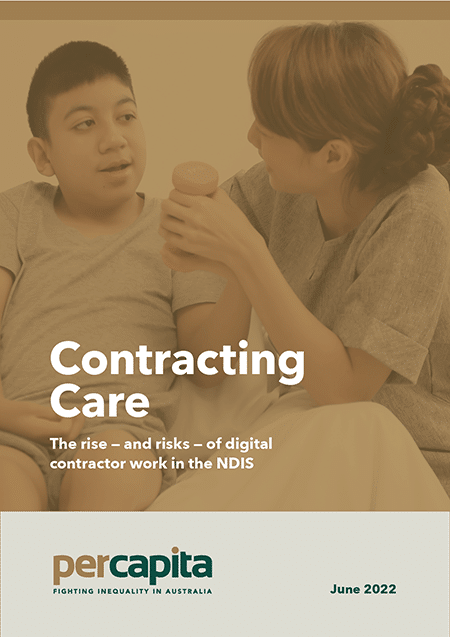The rise of contractor work, coordinated through digital platforms, has become one of the defining trends in the world of work over the past decade. From accountancy to food delivery, the seemingly inexorable rise of such work arrangements has been broadly seen as both a symptom, and a causal factor, of declining worker power.
Tech companies have seen the opportunity to absorb value, generated frequently by underpaid and marginalised workers, through monopolistic platform models in which former employees are outsourced to the position of digital contractors.
It is perhaps unsurprising then that the creation of a $20+ billion-dollar quasi-market for disability care through the NDIS would generate interest from such firms.
Within the NDIS market for care and support there are several companies operating as digital contractor marketplaces, with an operating model similar to that of Uber or Deliveroo. In such markets, disability support workers can, without registering with the NDIS Quality and Safeguards Commission, offer care and support services as sole traders. The digital contactor marketplaces then take a cut of the income received by the digital contractor, but without providing any of the legal supports that a traditional employer would provide, such as quality and safety guarantees for either the worker or the NDIS participant.
This report examines some of the potential consequences of these emerging trends in employment arrangements in the disability care labour market.
We discuss the implications of digital contractor marketplaces on 1., NDIS participants, 2., NDIS workers, and 3., the market for care and support as a whole.
While some may benefit from the increased flexibility that such work arrangements provide, moving from an employment to a self-employed status comes with considerable risks. The potential hazards of the digital contractor model for workers appear consistent across many industries: lower income security, more complex administrative requirements, fewer training and peer-to-peer support opportunities, higher personal liability risks, and fewer social protections like sick pay, parental leave and superannuation contributions.

